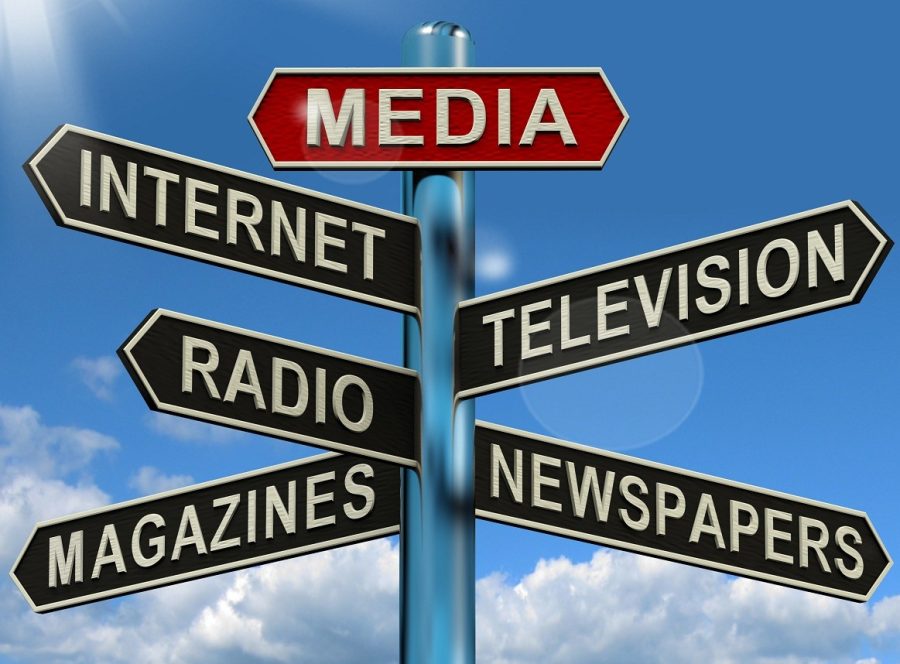From sensationalism, to bias, to flat-out false information, there are many ways the consumer can be bamboozled in the age of online and televised media. We are constantly bombarded with mediated information from all sides, whether it is over television, radio, newspaper or social media. At the Daily Wildcat, we believe that an education and understanding of media literacy is as important to a functioning democracy as the information itself.
Although the act of reading a journalistic article should be a simple process that gives the reader clear facts and information on events, people, topics, etc., we don’t live in a perfect world. It is on the individual consumer to have tools to filter truth and falsehoods in each piece of media viewed from any platform, whether it be newspapers and evening news broadcasts or social media and the internet.
RELATED: EDITORIAL: Cancelling Spring Break was not the right move
Media literacy is the set of skills involved in the critical consumption of news and media by identifying where media comes from and what it is intended to do. Media literacy is what allows citizens of democracies to consume information from news outlets and understand what is going on in the world around them.
In order to turn media literacy from a buzzword into a real concept, it is important to understand the contexts in which you see media, where the media came from and what underlying message the information in a media source is conveying.
Democracy hinges on its citizens and their ability to be media literate. In other words, the only way a democracy can survive is if its citizens are filtering out false information. In society, people act on information, and the most basic duty of living in a democracy — voting — is useless without factual information.
The spread of false information can also cause real physical harm. False information about racial groups and religions can cause hate crimes according to the United Nations. During the context of the COVID-19 pandemic, for example, this danger has been clear with anti-Asian hate crime occurring due to false information spread online. While words can be revised, actions cannot, especially those driven by the hate and malice that false information can provoke.
Many instances of disinformation proliferating social media have become relevant just this year. An example is the conspiracy theory that the online furniture store Wayfair was selling very expensive furniture labelled with names of missing children as a part of an elaborate child sex-trafficking scheme, which was not true. Unfortunately, despite absolutely no evidence to back this claim, you can see the spread and find the claims of this conspiracy on Twitter with a simple search.
This conspiracy theory is a small component of the growing terrorist group QAnon, which originated as an umbrella term for fringe conspiracies from the website 4chan. The fundamental agreement of QAnon believers is that top U.S. Democrats and celebrities are all part of a child-sex trafficking, pedophilic, Satan-worshipping ring — including President-elect Joe Biden and his affiliates, celebrities like Oprah Winfrey and religious leaders like Pope Francis — while outgoing President Donald Trump is the chosen one to rid the country of these people through “The Storm.”
According to The New York Times, Twitter, Facebook and YouTube have played essential roles in the spread of the online conspiracy. Violent acts and threats have been linked to the conspiracy, causing the current FBI director to classify the group as a domestic terrorist organization. Trump has done nothing but encourage the group, stating that they “are people that love our country,” and refusing to condemn them when asked to directly.
RELATED: How students are responding to a new online learning environment
Trump has also done more than enable and encourage a domestic terrorist group. As of Nov. 16, he tweeted more than 300 false claims about the presidential election results, with more being flagged every day. Twitter has been flagging this flood of disinformation as “disputed,” but has left the Tweets visible. This not only allows the spread of disinformation that destroys the credibility of what was the most secure election in U.S. history, it enables his supporters to actively deny reality, reject the election results and encourages violence against election staff.
Since Trump’s defeat, it has been reported that QAnon has “gone dark,” with no new posts from “Q,” along with a mixture of denial and an understanding of loss among supporters. This does not mean that QAnon is no longer a domestic terrorist group, it just means their largest enabler’s platform has become a lot more restricted. This will not end the groups’ beliefs or acts of violence.
QAnon and its massive following is only one example of how misinformation can infect a population by feeding people fear and lies in order to gain ground in popular media. The acts of violence encouraged by QAnon leaders and Trump pose a real, consequential threat to the functioning of our free elections in the U.S.
This spiral of false information, as aforementioned, is largely enabled by the failure of filtering on social media platforms. A March 2019 report showed 49% of U.S. adults unknowingly shared false information via social media.
The Daily Wildcat believes strongly in the importance of media literacy as media becomes increasingly influential in shaping our culture and beliefs, and, in turn, our public policy. Fake news — including doctored photos, online conspiracies and deep fakes — continues to infect our democracy with disinformation that drastically affects the outcome of policy, elections and the lives of every person under the jurisdiction of the U.S.
If media literacy continues to be neglected, false information not only threatens marginalized citizens and any people who oppose it, but also has the potential to undermine the idea of a free press, which is essential to a functioning democracy. The need for media literacy cannot be ignored. Radical change needs to happen in educating children on the media they consume, as well as working to gain trust of adults in trustworthy news organizations. This education must evolve with technology and media platforms.
Journalists work for the public. The public needs to carefully choose where their information comes from, while trusting journalists who work tirelessly to bring them information to use when voting for the future.
Follow the Daily Wildcat on Twitter









